
Hello, Readers !!
The Structure of Banking in India instigated in the last decades of 18th century. Indian Banking Structure is very different from that of other countries. Banking can be considered as the backbone of the country, its business, economic growth, and development because finance is the vital element for a country’s trade, commerce, and industry.
The role that banking system plays in a country can be quite but it is the most significant part of the country’s economy.
What is a Bank? Definition and Meaning
In simple words "Bank is a financial institution licensed as a receiver of deposits".
But if you want to define a Bank perfectly then we can say that “Bank is a lawful organization, which accepts deposits that can be withdrawn on demand, who also lends money to individuals and business houses that need it".
Why is Banking an Integral Part of Economy?
 Banking system plays a very significant role in the country’s economy by maintaining the flow of cash in various segment of the economy.
Banking system plays a very significant role in the country’s economy by maintaining the flow of cash in various segment of the economy.
As we know that money lending is a process which could be seen in the ancient time also by the zamindars and sahukars, who lend money to the borrower by taking land and other properties as a mortgage (security).
The money lending process is now undertaken by banks by providing credit and loans to other financial institutions.
The need of banking with government authorization is felt because India is not only the world largest democracy but also an emerging economic giant. The growth of the country depends on its credit facilities which can only be possible through an efficient banking.
India is an agricultural based country, and finance in agriculture is very important, which is also provided by those Banks, who provide funds for agricultural development i.e. NABARD (National Bank for Agriculture and Rural Development).
How Was Banking Started in India?
Banking in India has started in the 18th century.
Bank of Hindustan (1770-1832) and General Bank of India (1786-1791) were the very first banks, which failed later.
The oldest bank which still has its existence is the State Bank of India, originated in June 1806 as the Bank of Calcutta, renamed as the Bank of Bengal in the year 1809. Other two banks were the Bank of Madras and the Bank of Bombay.
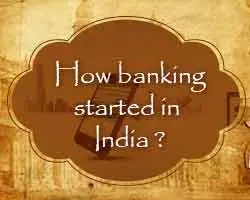
In the year 1921, these three banks got merged and become the Imperial Bank of India and renamed as the State Bank of India (SBI) in the year 1955.
Before the Reserve Bank of India emerged in the year 1935, the SBI acted as the central bank.
In the year 1960, the SBI took control over 8 subordinate banks, now called as associate banks.
14 major banks were nationalized in the year 1969 and 6 more banks were nationalized in the year 1980. These nationalized banks have the control over the country’s banking sector as they have a large network.
NABARD (National Bank for Agriculture and Rural Development) was established in July 1982, which looks after the development of the cottage industry, small industry and village industry, and other rural industries.
At present we have 93 commercial banks, 15 private sector banks, 44 foreign banks, 27 public sector banks, out of which 21 are nationalized banks and six are SBI and its associate banks.
Classification of banks
The Banking System in India is categorized into scheduled and non-scheduled banks. They are further divided into cooperative and commercial banks. The Reserve Bank of India (RBI) controls all these banks. RBI is considered as the Central Bank of our country. It also acts as the banker’s bank.
The structure of Indian Banking System can be understood as follows:-
A. Reserve Bank of India (RBI): Reserve Bank of India (RBI) is also called as Central Bank of India. RBI was established on April 1, 1935, under the Reserve Bank of India Act, 1934. RBI maintains records of deposits from all the banks and revenue and expenditures of Governments and provides a loan to other banks whenever needed. This acts as a banker to the Government and other Banks.
(RBI): Reserve Bank of India (RBI) is also called as Central Bank of India. RBI was established on April 1, 1935, under the Reserve Bank of India Act, 1934. RBI maintains records of deposits from all the banks and revenue and expenditures of Governments and provides a loan to other banks whenever needed. This acts as a banker to the Government and other Banks.
B. Scheduled banks: banks which are included in the Second Schedule to the Reserve Bank of India Act, 1934 are scheduled banks.
1. Commercial Banks: These banks help the entrepreneurs and businessmen by giving them financial services like debit cards, banks accounts, short-term deposits, etc. with the money people deposit in such banks. There are 93 commercial banks in India.
Public Sector Banks – These banks are owned and managed by Government. The major part share in these banks is of Government. Examples – State Bank of India, Punjab National Bank, Bank of Baroda etc.
There are 19 Public Sector Banks are there in India other than SBI and IDBI Bank because these two banks are considered as PSUs.
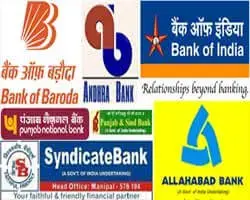
| LIST OF PUBLIC SECTOR BANKS IN INDIA including PSUs |
||||
| State Banks of India | Allahabad Bank | Andhra Bank | Bank of Baroda | Bank of India |
| Bank of Maharashtra | Canara Bank | Central Bank of India | Corporation Bank | Dena Bank |
| IDBI Bank Ltd | Indian Bank | Indian Overseas Bank | Oriental Bank of Commerce | Punjab And Sind Bank |
| Punjab National Bank | Syndicate Bank | UCO Bank | Union Bank of India | United Bank of India |
| Vijaya Bank | ||||
Private Sector Banks – These banks are owned and managed by Private undertakings, a major share of which are kept with these banks. Example – ICICI Bank, Axis Bank, HDFC Bank etc. We have 15 private sector banks.
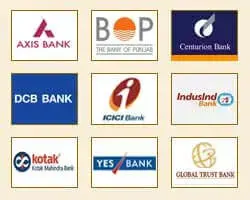
| LIST OF PRIVATE SECTOR BANKS IN INDIA | ||||
| Axis Bank | AU Bank | Bandhan Bank | Catholic Syrian Bank | Capital Small Finance Bank |
| City Union Bank | Development Credit Bank | Dhanlakshami Bank | ESAF Small Finance Bank | Equitas Small Finance Bank |
| Federal Bank | Fincare Small Finance Bank | HDFC Bank | ICICI Bank | IDFC Bank |
| IndusInd Bank | ING Vysya Bank | Jammu & Kashmir Bank | Janalakshmi Small Finance Bank | Karnataka Bank |
| Karur Vysya Bank | Kotak Mahindra Bank | Lakshmi Vilas Bank | Nainital Bank | North East Small Finance Bank |
| RBL Bank | South Indian Bank | Suryoday Small Finance Bank | TamilNadu Mercantile Bank | Ujjvan Small Finance Bank |
| Utkarsh Small Finance Bank | Yes Bank Ltd. | |||
Foreign Banks – These banks are based in a foreign country but have numerous branches in India. Example – HSBC, Standard Chartered Bank etc. There are 44 foreign banks in India.

| LIST OF FOREIGN BANKS IN INDIA |
||||
| AB Bank Ltd. | ABN AMRO Bank | Abu Dhabi Commercial Bank | American Express Banking Corporation | Australia and New Zealand Banking Group Ltd. |
| Bank of America | Bank of Bahrain & Kuwait BSC | Bank of Ceylon | Bank of Nova Scotia | Bank International Indonesia |
| Barclays Bank | BNP Paribas Bank | China Trust Commercial Bank | Citi Bank | Commonwealth Bank of Australia |
| Credit Agricole Corporate & Investment Bank | Credit Suisse A. G | CTBC Bank Co. Ltd. | DBS Bank | Deutsche Bank |
| Doha Bank | FirstRand Bank Ltd | HSBC Ltd | Industrial & Commercial Bank of China Ltd. | Industrial Bank of Korea |
| J.P. Morgan Chase Bank N.A | JSC VTB Bank | KBC Bank NV | Korea Exchange Bank | Krung Thai Bank Public Co. Ltd. |
| Mashreq Bank PSC | Mizuho Bank Ltd. | National Australia Bank | National Bank of Abu Dhabi PJSC | Rabobank International |
| Royal Bank of Scotland | Sberbank | Scotia Bank | Shinhan Bank | Societe Generale Bank |
| Sonali Bank Ltd. | Standard Chartered Bank | State Bank of Mauritius | Sumitomo Mitsui Banking Corporation | The Bank of Tokyo- Mitsubishi UFJ, Ltd |
| The Royal Bank of Scotland N.V. | UBS AG | United Overseas Bank Ltd | Westpac Banking Corporation | Woori Bank |
Regional Rural Banks (RRBs) – These banks functions with the objective of providing a loan to rural and agricultural provinces. Owned by State Government and a sponsor bank. Example – Allahabad UP Gramin Bank, Andhra Pradesh Grameena Vikas Bank, Assam Gramin Vikash Bank, etc. At present, there are 56 RRBs in India.
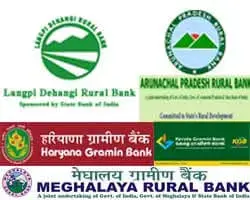
| LIST OF REGIONAL RURAL BANKS IN INDIA |
||||
| Andhra Pradesh Grameena Vikas Bank | Andhra Pragathi Grameena Bank | Chaitanya Godavari Grameena Bank | Saptagiri Grameena Bank | Arunachal Pradesh Rural Bank |
| Assam Gramin Vikash Bank | Langpi Dehangi Rural Bank | Bihar Gramin Bank | Madhya Bihar Gramin Bank | Uttar Bihar Gramin Bank |
| Chhattisgarh Rajya Gramin Bank | Surguja Kshetriya Gramin Bank | Durg-Rajnandgaon Gramin Bank | Baroda Gujarat Gramin Bank | Dena Gujarat Gramin Bank |
| Saurashtra Gramin Bank | Sarva Haryana Gramin Bank | Gurgaon Gramin Bank | Himachal Pradesh Gramin Bank | Parvatiya Gramin Bank |
| Ellaquai Dehati Bank | J&K Grameen Bank | Vananchal Gramin Bank | Jharkhand Gramin Bank | Kaveri Grameena Bank Mysore |
| Karnataka Vikas Grameena Bank | Pragathi Krishna Grameena Bank | Kerala Gramin Bank | Kerala State Co-operative Agricultural and Rural Development BankNarmada Jhabua Gramin Bank | Narmada Jhabua Gramin Bank |
| Madhyachal Gramin Bank | Central Madhya Pradesh Gramin Bank | Vidarbha Konkan Gramin Bank | Maharashtra Gramin Bank | Manipur Rural Bank |
| Meghalaya Rural Bank | Mizoram Rural Bank | Nagaland Rural Bank | Nagaland State Cooperative Bank Ltd. | Odisha Gramya Bank |
| Utkal Grameen Bank | Puduvai Bharathiar Grama Bank | Malwa Gramin Bank | Punjab Gramin Bank | Sutlej Kshetriya Gramin Bank |
| Baroda Rajasthan Kshetriya Gramin Bank | Rajasthan Marudhara Gramin Bank | Pallavan Grama Bank | Pandyan Grama Bank | Telangana Grameena Bank |
| Andhra Pradesh Grameena Vikas Bank | Tripura Gramin Bank | Allahabad UP Gramin Bank | Gramin Bank of Aryavart | Ballia Kshetriya Gramin Bank |
| Baroda Uttar Pradesh Gramin Bank | Kashi Gomti Samyut Gramin Bank | Prathama Bank Moradabad | Sarva UP Gramin Bank | Purvanchal Gramin Bank |
| Uttarakhand Gramin Bank | Bangiya Gramin Vikash Bank | Paschim Banga Gramin Bank | Uttar Banga Kshetriya Gramin Bank | - |
Payment Banks (PBs)- Payment Banks comes under a new model of Banks under RBI which neglects the credit risks experienced by other commercial banks. This means these banks can provide you only savings accounts and current accounts only. No loan and credit cards will be provided through these banks.
Payment Banks can accept demand deposits (Max.1 lakh). It also offers mobile payments/transfers/purchases, remittance services and other banking services like net banking, ATM/debit cards and fund transfer by a third party.
| LIST OF PAYMENT BANKS IN INDIA |
|
| Airtel Payment Bank Limited | India Post Payments Bank Limited |
| Fino Payments Bank Limited | Paytm Payments Bank Limited |
2. Cooperative Banks: Co-operative banks are financial entities which belong to their members, who are the owners and the customers of their bank, at the same time.
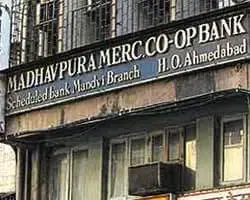 Primary Credit Society – These are formed in small localities and their members usually know each other.
Primary Credit Society – These are formed in small localities and their members usually know each other.
Central Cooperative Banks – These banks provide loans to their members, who belong to the same district and act as a link between the state cooperative banks and the primary credit societies.
State Cooperative Banks – These banks operate at the top level in every state.
3. Investment Bank: These are financial institutions, which provide financial and advisory assistance to individuals, businesses, or government organizations by raising funds when required.
4. Specialized Banks: These banks are foreign exchange banks, industrial banks, development banks, export-import banks satisfying the specific needs of these unique activities and provide financial support to industries, heavy turnkey projects, and foreign trade.
Important facts relating to Indian Banking
Canara Bank is the first Indian bank got ISO (International Organization for Standardization) Certification.
PNB (Punjab National Bank) is the first Indian bank started solely with Indian capital investment.
The First governor of RBI is Mr.Osborne Smith and First Indian Governor of RBI is Mr C D Deshmukh.
Presidency Bank is the first bank to introduce savings account in India (in 1833).
Bengal Bank is the first bank to introduce cheque system in India (in 1833).
Central Bank of India is the first bank to introduce credit card in India.
State Bank of India (SBI) is the largest Commercial bank in India.
HDFC Bank has launched Mobile Bank Accounts in association with Vodafone’s “m-paisa”.
Minimum money transfer limit through RTGS (Real-time Gross Settlement Systems) is 2 Lakhs.
State Bank of India (SBI) is the largest Public sector bank in India and also the first bank to introduce mutual fund.
ICICI Bank is the largest Private sector bank in India and also the first bank to introduce internet banking.
Standard Chartered Bank is the largest foreign bank in India.
Bank of India is the first Indian bank to open a branch outside India (in 1946, London).
Syndicate Bank started the first RRB named Prathama Grameen Bank.
HSBC is the first Bank to introduce ATM in India. (in1987, Mumbai)
Bank of Baroda has the maximum number of overseas branches and SBI holds the second position.
HDFC Bank launched “Premium credit cards exclusively for women” and a product of Personal loan called “SWIFT”.
Asian Development Bank approved a loan of $500mn to help India improve Rail services.
FDI limit for new banks is 49%.
FDI limit for private banks is 74%.
We have covered all the detailed information related to Indian Banking in this article. You will get help in answering the questions about banking systems in the competitive exams.
If you feel that the information is worth sharing, please do share it with your friends. Also, comment your views below.
For more information and study tips, follow our YouTube channel like our Facebook page if you are interested in Daily Quiz and Amazing Facts related to banking
Thank You


















